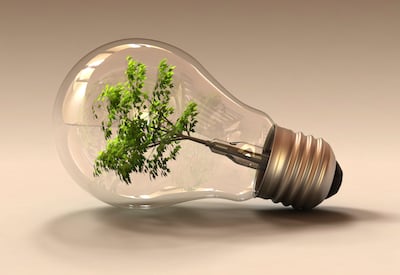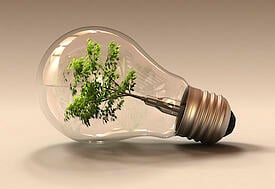Explore Springs Apartments

 This article originally appeared on the Springs "You're Home Blog."
This article originally appeared on the Springs "You're Home Blog."
Despite amounting to much less than you’d be paying if you lived in a house, energy bills for the average apartment dweller can be a fairly good chunk of your monthly budget. But keeping costs at a minimum is easy with a few guidelines – some you know and some you may not have thought about.
Check Your Vents
Many people mistakenly believe that if they shut a vent or two in their apartment, their heating and/or cooling costs will decrease. What they don’t know is that their apartment’s thermostat will need to work overtime to push out enough heat/cold to reach the temperature that’s been set – and there go any savings they’d hoped for. Instead, open all your vents to allow the HVAC system to get the temperature just right. (If you have a 2-bedroom apartment and the second is rarely in use, the vents in that room can be closed, but if you do that be sure to keep the door closed, essentially eliminating it from your heating/cooling equation.)
Set A Moderate Temperature
The U.S. Department of Energy says that you can save approximately 3% on your heating bill for each degree that you turn your thermostat down in cold weather. The Environmental Protection Agency recommends that you set your thermostat to 70 degrees while you’re home (less if you can handle it) and 62 degrees while you’re away or sleeping. These numbers don’t directly apply to cooling, but the principle is the same: set the thermostat higher (to be warmer) while you’re away and only turn it down (to be cooler) when you’re home.
Get The Air Flowing
We all know heat rises and cold air sinks. To get the right air in the right place and keep your HVAC system from working too hard, get the air where it needs to be using your ceiling fan. In cold weather, make sure the fan is pushing air down, moving that warm air to where you are; in warm weather, pull the cold air from the floor higher into the room by switching the fan direction so that it’s pulling air upwards. Don’t have a ceiling fan? A table or floor fan circulating air still helps moderate the heat and cold spots.
Fine-Tune Your Laundry Settings
It’s easy to cut down on energy usage and cost by changing how you do laundry. First, wash in cold water whenever possible. The only items you should be washing in hot water are those that you need ultra white or that have tough stains; otherwise cold (or at the most warm) should do.
Next, don’t overpack that washer…a packed washer means a packed dryer, and your dryer will have to work extra hard to remove moisture (or you’ll end up running it through 2 cycles). Like the washer, set the dryer on any but the highest setting. Try your shortened cycle settings to determine if that might be enough to get your typical load dry and use that as your default.
Finally, check with your local utility company to see if it offers discounts for “off-peak” energy usage. Usually these less-expensive time periods start around 8:00 p.m.
Don’t Overload or Underload Your Dishwasher
Running a tiny load of dirty dishes wastes a lot of energy, but so does running an overloaded one because you’ll inevitably end up rewashing some or all of the dishes. Fill it up to capacity but no further.
Another cost-saving step is to set your drying cycle to “no heat” and just let your dishes air dry on the racks. This method could leave your dishes with water marks (unless you use a rinse aid) but will save a fair amount of energy. Alternatively, you could simply select a lower heat (this feature is not available on all machines).
One more trick is to make sure you’re using the right racks for the right dishes. If you’re putting bowls on the bottom rack, for example, you’re keeping the lower jets from spraying water on the insides of glasses on the top rack, reducing effectiveness of the machine. Again, not every machine is designed the same, so check yours to see if you might be obstructing water by the way you load it.
Unplug Your Devices
This Standby Power Summary Table shows that almost all the electronics we use consume electricity even when they’re turned off or idle/asleep. A fully charged cell phone plugged into the wall, for example, still consumes 60% of the power it consumed while charging; a full charged laptop that's plugged in consumes 66% of the power it uses while charging. The U.S. Department of Energy estimates that the dozens of idle or "off" devices in millions of American households are responsible for an estimated 10% of residential energy use – and at least $4 billion paid for wasted energy every year. The bottom line? Unplug when not in use!
Not only is saving energy good for the environment, but it’s a smart way to optimize your budget and leave a little more in your wallet each month. Try the tips outlined here and, if you want to know other ways to be more energy-conscious, visit the Department of Energy’s website.
These Stories on Apartment Living
Take Comfort In Being Home
Visit Our Blog
262-502-5500
We Your Pets
Privacy Policy | Cookie Policy | Terms of Use | Accessibility Statement
Owned and managed by Continental Properties, an award-winning corporate leader and developer of apartment communities nationwide. Copyright © 2025 Springs Apartments